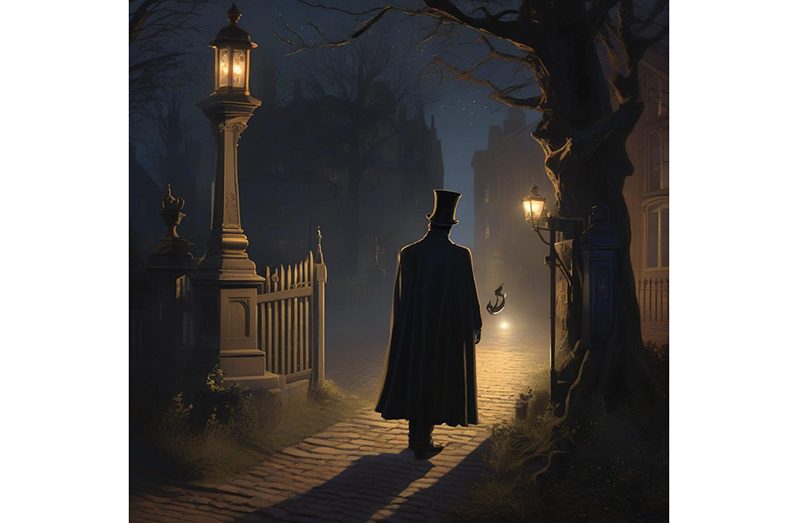Your first draft is finished…what’s your next step?
ON January 16, 2014, as a young writer in Guyana, I made a bold decision: I would write a full-length thriller novel. In the Guyanese literary canon, most of the work by contemporary authors centre on poetry and short story anthologies. Inspired by a desire to expand the local literary landscape, I set out to contribute a full-length fiction novel. I knew since then that this would be a huge undertaking, given the challenges of limited resources and a non-existent local publishing industry. Nearly 11 years later, in a hotel room in Paris, in September 2024, I completed the first draft of my debut novel, Leech.
When I started this column, I did so with the aim of sharing insights I gained in my journey toward becoming a professional writer in Guyana, including various aspects of the writing process and options for publishing and earning from the work. As I venture on this new journey, I thought it would also be useful to share the steps I am taking to bring Leech to publication.
Reaching the finish line
Completing Leech has been one of the most challenging undertakings of my life. To clarify, I have not been writing continuously for those 11 years. Cumulatively, I’d say the process took about two to three years. But in the absence of a supportive writing community, resources, and capacity-building opportunities, the journey often felt isolating. Writing alone requires both discipline and motivation—two qualities that are easier to maintain with a community to lean on. So when writer’s block, self-doubt and life disruptions came into play at various parts of the timeline, lengthy stalls came with them. Throughout that time, however, research became my saving grace. I sought support and met excellent writing coaches who played crucial roles in helping me reach the finish line.
My first piece of advice to fellow writers embarking on a similar journey is to consider hiring a writing coach. But while input from experienced writers and editors in any field is helpful, I would advise that you seek out someone who specialises in your genre for the best results. Writers often become deeply attached to their work, and a coach can provide the technical perspective to guide you through weaknesses or blind spots in your manuscript. Over the years, I’ve had the privilege of working with two incredible coaches whose guidance helped bring Leech to life.
Hiring a writing coach
My first coach, Jim Parsons, a retired Australian English teacher and enthusiast of horror and thriller fiction, guided me in transforming Leech from a one-dimensional concept to a nuanced story with more relatable characters, and that transformation allowed the story to take on a life of its own. Sadly, Jim passed away sometime after our sessions concluded, but I hope the finished work is something he would have been proud of.
Later, when I found myself once again struggling with writer’s block, I met Stephanie Miller, a New York-based developmental editor and author of Big Waves & Wooden Benches and Forgive Me Grandma, For I Have Sinned. Stephanie went through the half-written manuscript and then firmly withheld her developmental feedback. She insisted that finishing the manuscript was essential and any structural feedback before then would distract me- she knew me so well. Instead, she focused on helping me overcome immediate challenges and guided me back on track to writing. When I finally completed the draft in September, her response was, “Congratulations on finishing this book. I have wondered about you often. It’s one of the most interesting books I have ever edited, and I was genuinely bummed I only got to read half of it—I had to know what happened!” Coaches like Stephanie and Jim are essential allies. I am thrilled to now have Stephanie on board as Leech’s developmental editor, which I’ll cover in more detail in next week’s column.
What comes next?
The first step after completing a draft, as many will advise, is to take a break. The aim is to distance yourself from your manuscript, allowing time for your mind to reset before you dive into revisions. However, given that Leech took nearly 11 years to complete, I had already taken plenty of breaks. I immediately began a fresh review, assessing the draft as an external reader to identify any issues without yet making changes. This stage set the groundwork for the next phase: editing.
Editing is a multi-layered process that addresses different aspects of the work. Depending on the depth of edits needed and the available budget, writers can choose or will be advised (if they have a team) about which types of editing to invest in. After reviewing my manuscript, I opted to pursue developmental editing (addressing structural and narrative issues) and copyediting (correcting grammar, spelling, and punctuation). Proofreading and feedback from beta readers will follow before publication.
I plan to unpack each step of this process in upcoming columns. Currently, I’m awaiting feedback from my developmental editor, fully aware that extensive work lies ahead. It’s an exciting yet nerve-wracking phase, but I am thrilled to be on this journey and even more so to share it with you.
Writing can feel like a solitary endeavour, yet it’s crucial to share our experiences, especially when resources are limited. The steps I’m taking may not be universal, but I hope they will serve as useful guidance for other local writers navigating their own paths to publication. Join me as we bring Leech to print!
If you’re interested in discussing a writing project or seeking advice on writing and editing, email thewritemind@gmail.com



.jpg)










